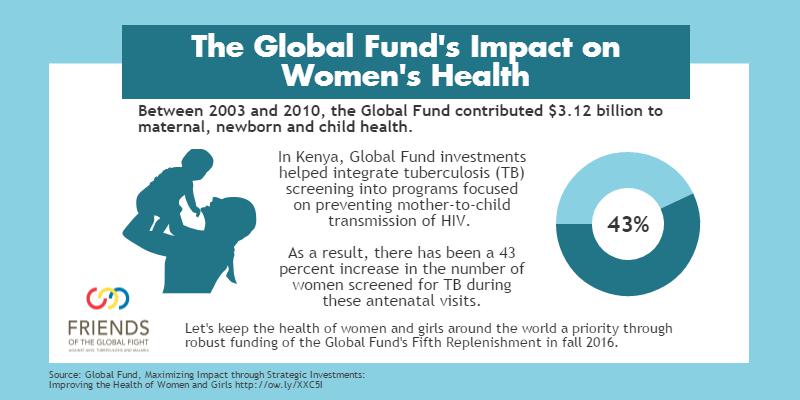February 12, 2016
In December, the Global Fund released, “Maximizing Impact through Strategic Investments: Improving the Health of Women and Girls.” This analysis of the Fund’s gender equality strategy and action plans provides a look at how Global Fund investments change the realities of women and girls across the world.
The Global Fund’s work on the three epidemics plays a significant role for women and girls. When AIDS-related deaths peaked in 2004, female deaths due to the disease outnumbered male deaths by more than 100,000. The Global Fund partnership and the larger global health community’s work to fight HIV/AIDS has helped to close that gap – by 2014, there were approximately 40,000 fewer HIV/AIDS deaths for women than men.
But there is still a lot of progress to be made. HIV/AIDS remains the leading cause of death for women between the ages of 15 and 44. Women in southern Africa are twice as likely to be living with HIV/AIDS than men. Additionally, tuberculosis (TB) is one of the leading causes of death for women of reproductive age.
To fight these epidemics, the Global Fund is investing strategically in programs that focus on reaching and treating women and girls. In Kenya, for example, Global Fund financing has supported the addition of TB screening services to programs that help prevent mother-to-child transmission of HIV. As a result of this programming, there has been a 43 percent increase in the number of women screened for TB during antenatal care visits at which they were also tested for HIV.
The Global Fund is showing how targeted initiatives that benefit women and girls can help bring about greater integration of services and have broader applications for health.

